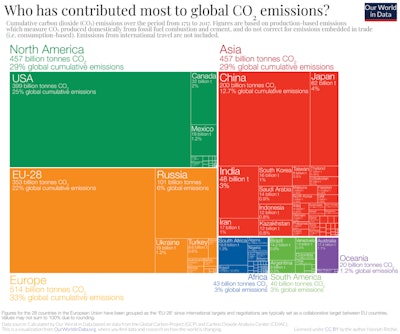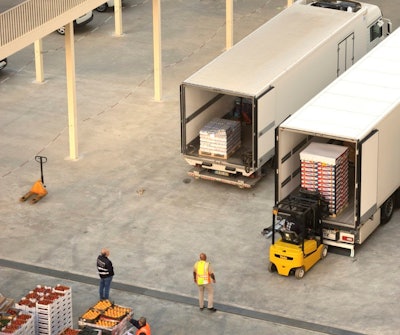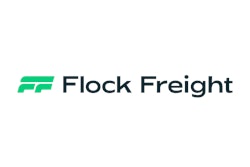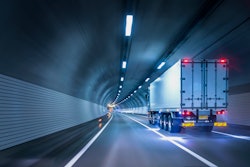Just a few short months ago, American highways were lined with carrier fleets as semi-trucks transported freight all over the country. Today, freeways in the United States are emptier than ever.
Decreased economic activity has translated to fewer motor carriers on the road and had an overall positive impact on the environment. Stopping big rigs in their tracks, coronavirus has unexpectedly (albeit temporarily) improved the situation for Mother Earth.
The pandemic has caused a myriad of problems though. In addition to creating major public health dilemmas and economic hardships, coronavirus has forced the trucking industry to contend with the waste and inefficiency of moving relatively small freight volumes.
Luckily, there’s a solution that optimizes truck space, minimizes costs for shippers, and maximizes revenues for carriers. Plus, it avoids the environmentally unfriendly hub-and-spoke system. No, it’s not full truckload (TL) shipping (it’s more affordable than that). It’s shared truckload (STL) shipping.
To see just how revolutionary shared truckload is, it’s helpful to examine the data around carbon emissions during the crisis and understand why driving partially full trucks is wasteful.
The environmental impact of parked trucksTruck fleet emissions heavily contribute to global warming, with every push of the gas pedal releasing harmful carbon dioxide into the atmosphere. Reducing the number of trucks in operation, coronavirus has presented scientists with a rare opportunity to measure worldwide emissions levels.

Let's consider data on the U.S., the European Union and China:
America
- The U.S. produces more carbon emissions than any other country
- Transportation (the movement of vehicles) is the number one source of emissions in America, emitting 1.9 billion tons of carbon dioxide every year.
- Freight trucks account for 23% of American transportation and 6.67% of the nation's annual carbon emissions.
- Taken together, the 27 countries of the EU emit the second largest amount of carbon emissions across the globe
- The EU's daily carbon emissions are doing by 58% since the start of Coronavirus
- China emits the third largest amount of carbon dioxide in the world.
- Chinese emissions fell by 25% between Feb. and March due to the pandemic.
According to a Scientific American article, the crisis has caused “a dip in global greenhouse gas emissions” all over the world. In fact, the International Energy Agency anticipates total worldwide carbon emissions to shrink by a staggering 8% (or 3.4 billion tons) this year as a result of coronavirus. If that happens, 2019’s carbon emissions of 43.1 billion tons would drop to 39.7 billion tons in 2020.
Clearly, shipping freight comes at a cost to the planet. We can infer from scientific findings that — from an environmental perspective — it’s never been more important for the trucking industry to make the most of fuel and deck space.
Smaller loads = bigger headaches
Coronavirus loads have been smaller than pre-pandemic loads. Lately, shippers have had to deliver freight just as fast or faster than they did before coronavirus and have been opting to send partially full loads when they might typically wait to fill a whole truck.
Shippers are looking for the best way to ship these smaller loads. TL and less-than truckload (LTL) shipping are two options, but neither is ideal for reducing emissions or moving partial loads in today's landscape.

LTL service zigzags shipments through the outdated hub-and-spoke system, moving them inefficiently through multiple hubs before delivering them to their respective drop-off locations. Without a care for carbon emissions, the hub-and-spoke system passes shipments from truck driver to truck driver, emitting more pollutants than necessary.
TL service creates waste, too. Filling trucks all the way isn’t a priority with TL; trucks move regardless of load size, oftentimes leading to unused truck space. TL also wastes trips when shippers don’t plan backhauls in advance; without a new load to refill the truck, TL releases toxins while moving air.
How much do the LTL and TL modes contribute to carbon emissions?
LTL shipping accounts for 1.2% of the U.S.’s annual carbon emissions, which converts to 342 million tons every year
TL shipping accounts for 2.9% of the U.S.’s annual carbon emissions, which converts to 836 million tons every year
LTL and TL are neither green nor efficient at transporting small loads. TL service traps shippers into paying for more space than they need, while LTL service causes delays and damages (two issues that shippers can’t afford right now). Add in the facts that the TL sector has been on the decline for months now and the LTL sector has been a petri dish for COVID-19 spread, and neither option sounds appealing. Luckily, there’s a better solution: Shared truckload shipping.
In conclusion, explore shared truckload

Shared truckload service benefits shippers, carriers, and Earth’s natural habitat.
With STL service, shippers enjoy the same TL benefits that they know and love for a fraction of the price. STL enables them to share trailer space with other shippers and guarantees the efficiency of TL service: Trucks transport freight that’s headed in the same direction along a direct route — without stops at hubs or terminals — and deliver shipments intact and on time. Without a doubt, shippers who book STL hit the trifecta: Green TL service at a better rate.
Shared truckload helps motor carriers, too. Moving STL shipments pays more than standard one-pick, one-drop truckload freight. By topping off trailers, the shared truckload mode provides carriers with a way to maximize their revenue potential. What carrier doesn’t want to raise profits, especially when rates are volatile?

The other winner is the environment. Shared truckload eliminates unnecessary trips by filling trucks to capacity, in addition to:
Removing the need for carbon-intensive and energy-consuming LTL facilities
Erasing the environmental risks of remanufacturing and reshipping goods that had previously been damaged in the hub-and-spoke system
Shared truckload is the only freight mode that is designed to reduce the trucking industry’s carbon footprint.
In conclusion, shipping or partnering with a logistics provider that offers shared truckload service advances green trucking initiatives and drives the freight industry forward.














